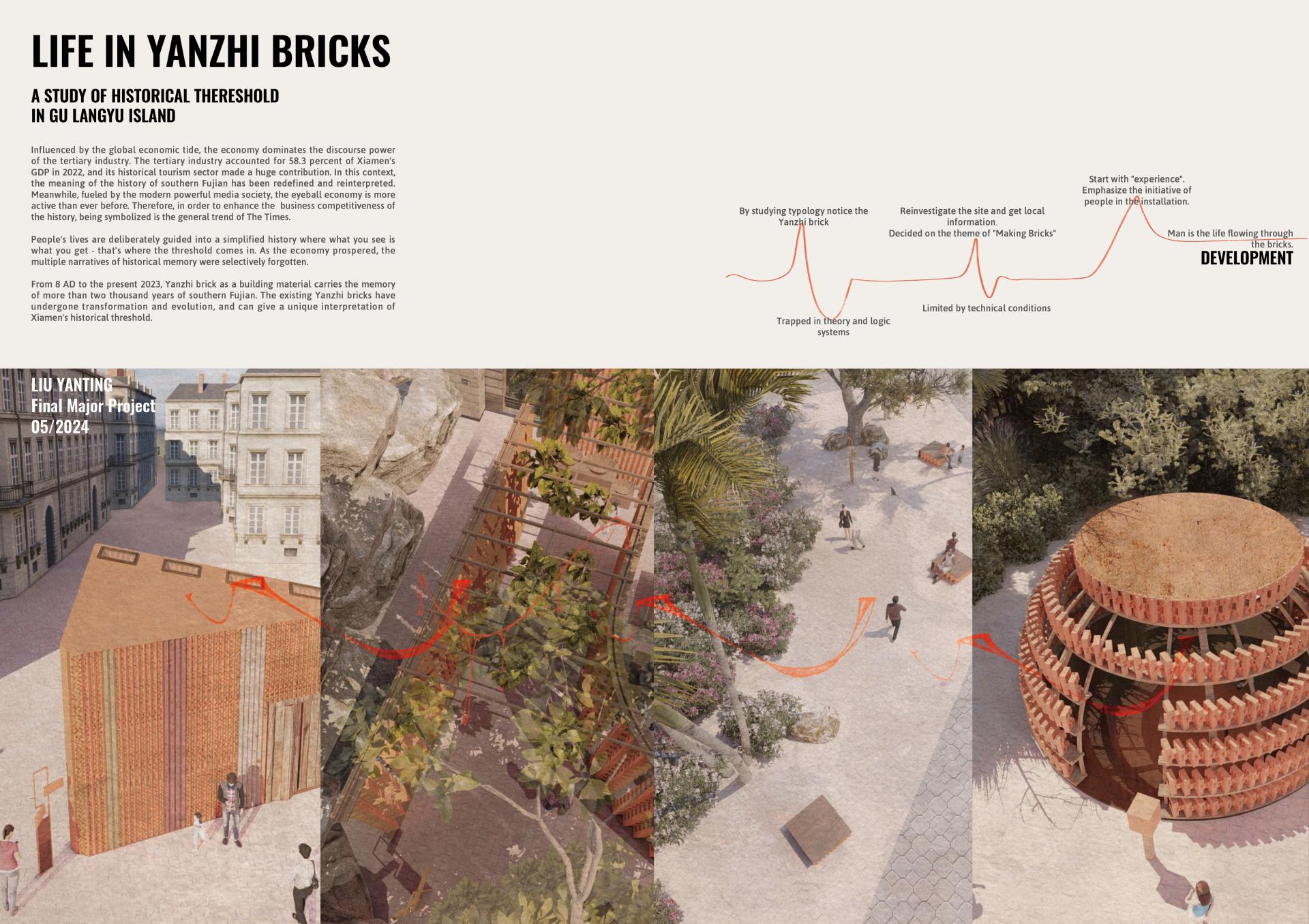Authenticity and materiality are topics worthy of discussion. I believe that the complex narrative of material culture today is somewhat overshadowed by the economic narrative. As a common building material in southern Fujian region of China, Yanzhi brick has undergone a post-structuralism process, and its ancient skills of more than two thousand years are facing the crisis of oversimplification. It is worth mentioning that the irregular black stripes on the Yanzhi bricks are naturally formed by the soot falling in the cracks of the bricks during the manual firing process. But after 1920, the brick-making process gradually became industrialized, and the black lines became a unified template. Efficiency and profit have replaced rhythm and nature. Influenced by the port trade in modern Chinese history, Gulangyu Island in Xiamen is the most obvious area influenced by the Yanzhi brick culture. In 1843, Xiamen opened to the outside world, and Gulangyu began the process of modernization. At the end of the 19th century, there were foreign consulates, Western villas, clubs, church buildings, etc. In the first half of the 20th century, overseas Chinese investment and construction made the development of the block updated, added new branches, and formed the overseas Chinese residential area in the area. Thus, the threshold is generated on such a small brick, the black texture connecting the past and the future, the traditional and the modern, is a microcosm of the changing times.
This project uses the perspective of relational material culture theory to understand the dynamic relationship between people and the Yanzhi brick, and uses spatial activation strategies to intervene in the phenomenon of threshold values. The site selection of the project is located in the Luerjiao Loop-Line Road, Gulangyu Island, Xiamen. The old and new Yanzhi bricks are distributed on different buildings in this area. In general, most modern machine-made bricks are used to decorate hotels and other architectural attractions, while older Yanzhi bricks are relatively intact in residential buildings, where the potential role of the tourist economy cannot be ignored. In the area near the piano dock, the project visualizes the four steps of making bricks (collecting soil, shaping, drying, drying) into different modern architectural/landscape installations. In addition, this design adopts a special brick stacking structure in Gulangyu area, and applies this structure to four different devices. Hand-made Yanzhi bricks are the main material, followed by wood as an auxiliary structural material. People can gradually experience the process of making bricks before entering the Yanzhi brick area, making one or more 1:16 sized Yanzhi bricks. For locals, everyday experiences are recreated, and for tourists, historical perspectives are brought into the process of travel.
Overall, by experiencing the process of making bricks, people are able to reshape their experience of the physical practice of bricks in response to an oversimplified, efficient society, making the traces of The Times more visible in their lives.









